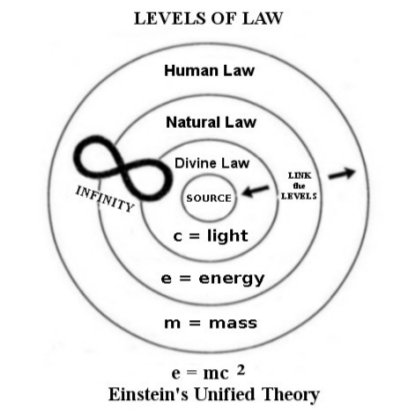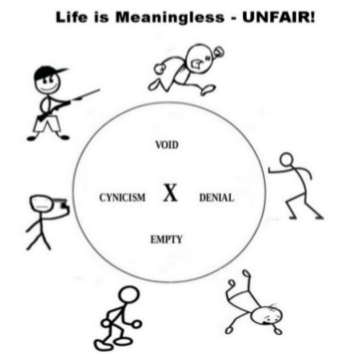This post continues the threads, “If You Love Your Children . . .” and “. . . Tell Them How the World Works.”
Tragically, schools have been being co-opted by ideologues who promote the false belief that the way to end human suffering is to destroy unjust social structures. This brainwashing poses a grave danger to young people. It is more likely to end human life on the planet than to end suffering.
In thinking how to best counter destructive lies, I recalled these lines from Essay Sketches on Positive Action:
WHAT YOU SEE IS WHAT YOU GET.
Life is whatever you choose to make it.
I also remembered the words of a mentor at the Wisconsin School Board Association. Shaking his head, Senn Brown told me, “You are ahead of the times.”
Well, as the song goes, “Something’s lost but something’s gained in living every day.” Though I was already on track, I’ve learned a bit since then.
In If You Love Your Children . . , I described Dr. Peterson’s advice for withstanding unfairness and suffering. It’s summarized in 12 Rules for Life: An Antidote to Chaos:
Essentially, his book advises people to “man up.” All of us have the potential to be much better than we are. Before criticizing the world, our first responsibility is to improve ourselves with discipline, carving out meaning in our lives as a bulwark against the chaos of life’s inevitable hardships.
Certainly this is excellent advice for coping with circumstances, literally standing on the circle’s rim.
But there’s much more to life than circumstances experienced on the surface. And the origins and solutions to most of our problems lie hidden beneath that surface.
For positive solutions to current circumstances, we have to look deeper. We need to remember the fabulous inherent inner resources whose very existence is denied by believers in shallow, exclusively materialistic science who give us permission to know only that which is tangible, measurable and quantifiable.
In contrast, the wisest among the teachers of any other time and place than our immediate circumstance have consistently told us that we are far more than a physical body.
The rules of this deeper wisdom are summed up in The Positive Paradigm Handbook: Make Yourself Whole Using the Wheel of Change. It lists Seven Axioms which compliment and complete Dr. Peterson’s 12 Rules. They give depth to his assertion that all of us can be much better than we now are.
Consistent with its predecessor, the Book of Change, The Handbook holds:
- Dysfunctional paradigms tie us in knots. They tear us apart. They drive us crazy. They push us (first individually, then collectively) to murder and even suicide.
- To survive intact, we must cleave to the essence of the perennial philosophy. The universal Life Wheel is a snapshot of the essential truth which the world’s great religions share in common. It offers us a way out of global madness. It gives us a means for restoring sanity to our world outlook.
- Peace and positive change necessarily begin one individual at a time, and are accomplished from the inside out. So long as dysfunctional paradigms put individuals at war with themselves, general ignorance will continue to escalate into worldwide conflict.
The Seven Axioms, along with basic corollaries, are based on the multi-dimensional, two-directional Life Wheel that looks like this:

These are the axioms:
AXIOM 1. A complete and correct paradigm is the key to personal well-being and success.
AXIOM 2. We are each a world complete, containing the potentials of the universe.
AXIOM 3. Unity at the center and diversity on the surface are necessary compliments.
AXIOM 4. The consequences of action are inevitable; those who respect the law of karma succeed.
AXIOM 5. History is cyclical, not linear or progressive; nor can human survival be taken for granted.
AXIOM 6. Used as a linguistic tool, the Life Wheel promotes clear, accurate and effective communication.
AXIOM 7. With a correct paradigm, practical methods and useful tools, you can make yourself whole.

Here is how I would apply these axioms to answer the radical student’s question to Dr. Peterson about unfairness, alienation and loneliness.
Taking up where I left off in “ . . Tell Them How the World Works,” I mentioned creating images to illustrate written text. This is important, because words function in the analytical (yang) left-brainer mode, while pictures speak to those of us who function primarily in the creative non-verbal (yin) right-brainer mode.
What you do or don’t see, through which ever side of the brain you favor, depends on you. If you’re fortunate to have both sides active, balanced and cooperating harmoniously, all the better.
To refresh your memory, a primary excuse ideologues use to rationalize overthrow of the established order is “thrownness:”
. . you’re a certain race and you’re born with a certain level of intelligence. You’re born in a certain culture with a certain language and in a certain socio-economic class and with a certain degree of attractiveness. And those are all things that are handed to you.
As Dr. Peterson paraphrases their argument:
The talents and catastrophes of life are by no means equally distributed. From the perspective of the standards of human justice and perhaps human mercy as well, there is something intrinsically unfair, unjust about the structure of existence itself.
Here is my picture of the catastrophes that result from living exclusively on the surface, ignorant of the workings of our inner universe. Both center and middle levels of life are repressed to comply with exclusively materialistic rules of the knowledge game.
As an aside, let me emphasize that suffering of the natural world is magnified and twisted beyond recognition by the unnatural, unnecessary overlay of ignorance humans add to the mix.

What do you make of it?
At first glance, it makes me think of PTSD victims, suicidal drop-outs, violent protesters and serial killers. At second, it reminds me of Pastor Joe Fox’s survivalist advice. “If you believe you are helpless, that whatever you do makes no difference, that there’s no hope, it’s true.” Believing it makes it so.
To name just a few who rose above harsh circumstances – What if Nelson Mandala, born black in an apartheid nation and incarcerated for dozens of years, had acted on this world view? Or Anne Frank, who hid in an attic from Nazi oppressors until betrayed, and died at age 15 in a concentration camp? Or Helen Keller, left deaf, dumb and blind after an early disease?
In contrast, here’s a picture of life completed by inner wisdom. Mandela, Frank and Keller drew on these resources to overcome harsh circumstances. So can each of us. The image gives new meaning to Dr. Peterson’s repeated advice, “Go deep!”

It reminds me of Solomon’s words, “To everything there is a season.” In a complete world view, through the times friendship, love, work and conflicts, the full spectrum of emotions is in-formed by self-aware introspection and, at the deepest level, the abiding stillness of inner peace.
Based on this world view, I would ever so briefly suggest that each of our present circumstances is the result of a long history of past actions. And our futures depend upon the choices made and actions we take NOW.
Also, as concluded in If You Love Your Children. . . :
What if (like Christ born in a filthy stable) you came here on a soul mission, given challenges perfectly matched to your unique calling – perhaps life lessons to be learned? What if life is complex and mysterious, but inherently just? It’s quite possible.

But this is plenty to absorb for now. Another set of pictures shows an alternative, wisdom response to life’s suffering. But it will wait.
Closing where I started today, my School Board Association mentor, Senn Brown, told me I was ahead of my times. He said this because I warned out of the gate that Affirmative Action legislation missed the point. Not only was it unenforceable. It would trigger inevitable backlash.
I’m one of Camille Paglia’s generation. Toxic, irrelevant universities could not contain creative thinkers. She told Dr. Peterson her peers dropped out, overdosed and disappeared off the radar.
But I chose a less traveled path. Though having no illusions about the University, I completed the Ph.D., committed to earning the credential required to build relevant schools which DO meet students’ needs.
Deeper still, I held fast to the belief that relevant sciences and teachers are still available to those who sincerely seek them. And in that I was not disappointed.
I continue to write, sustained by the hunch that the day is soon coming when I and the times will finally come into synch.
In any case, you might find the rest of the Essay Sketch I opened with interesting:
WHAT YOU SEE IS WHAT YOU GET. Life is whatever you choose to make it. Make cultural heroes of people who pride themselves on their ability to beat the system and stand above the crowd — eager-to-please imitators will strive to replicate that model.
What would the world be like if, instead, value were placed on good will, friendship and cooperation? Not leveling, mind you. Communist experiments in China and Russia have proven that starving personal initiative doesn’t work any better than the everyone-for-himself approach.
Try the middle road. Give Positive Action a chance, and see what you get. Start small, with what can be done in your own personal life and inner circles. The ripples will spread in all directions.






